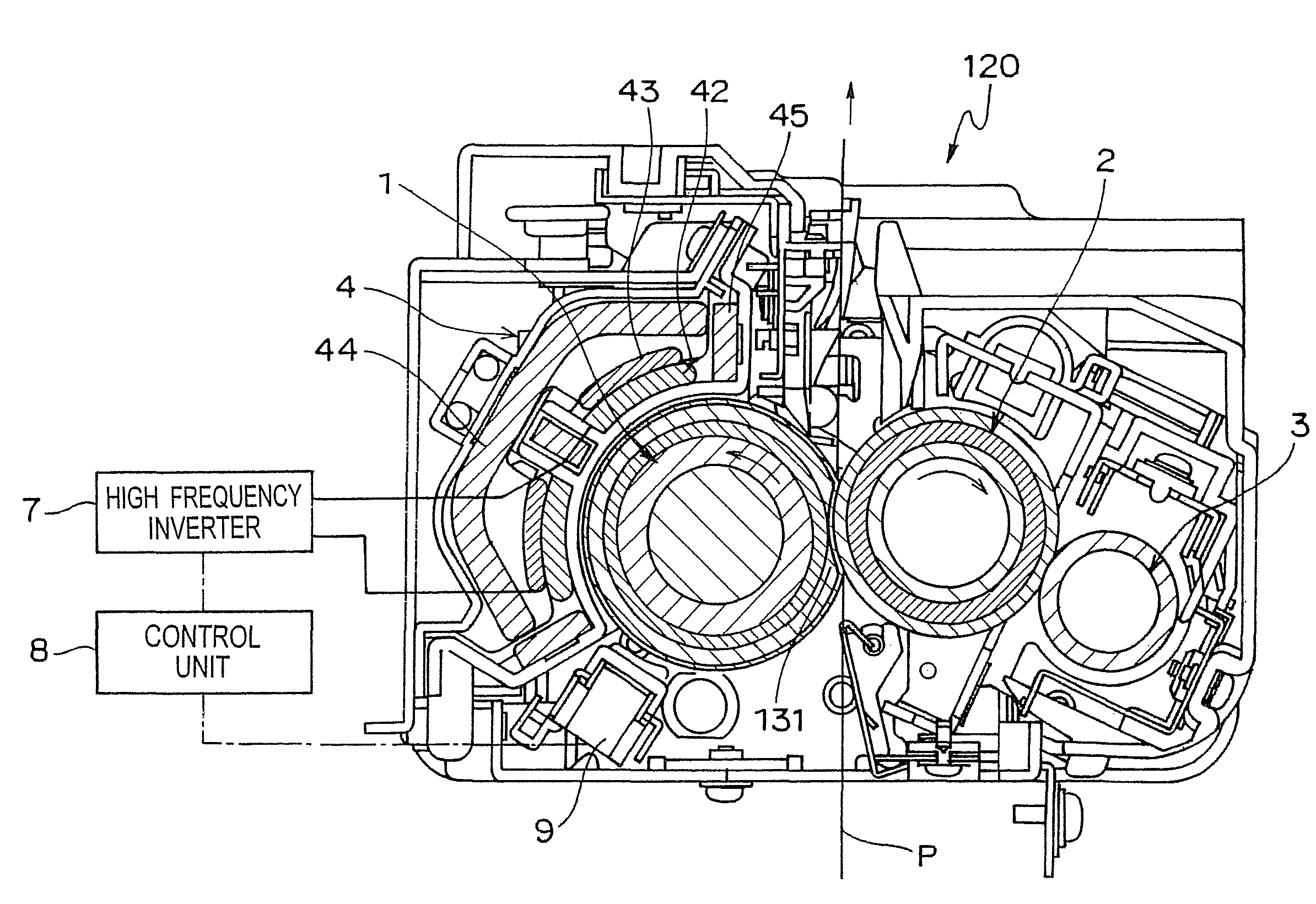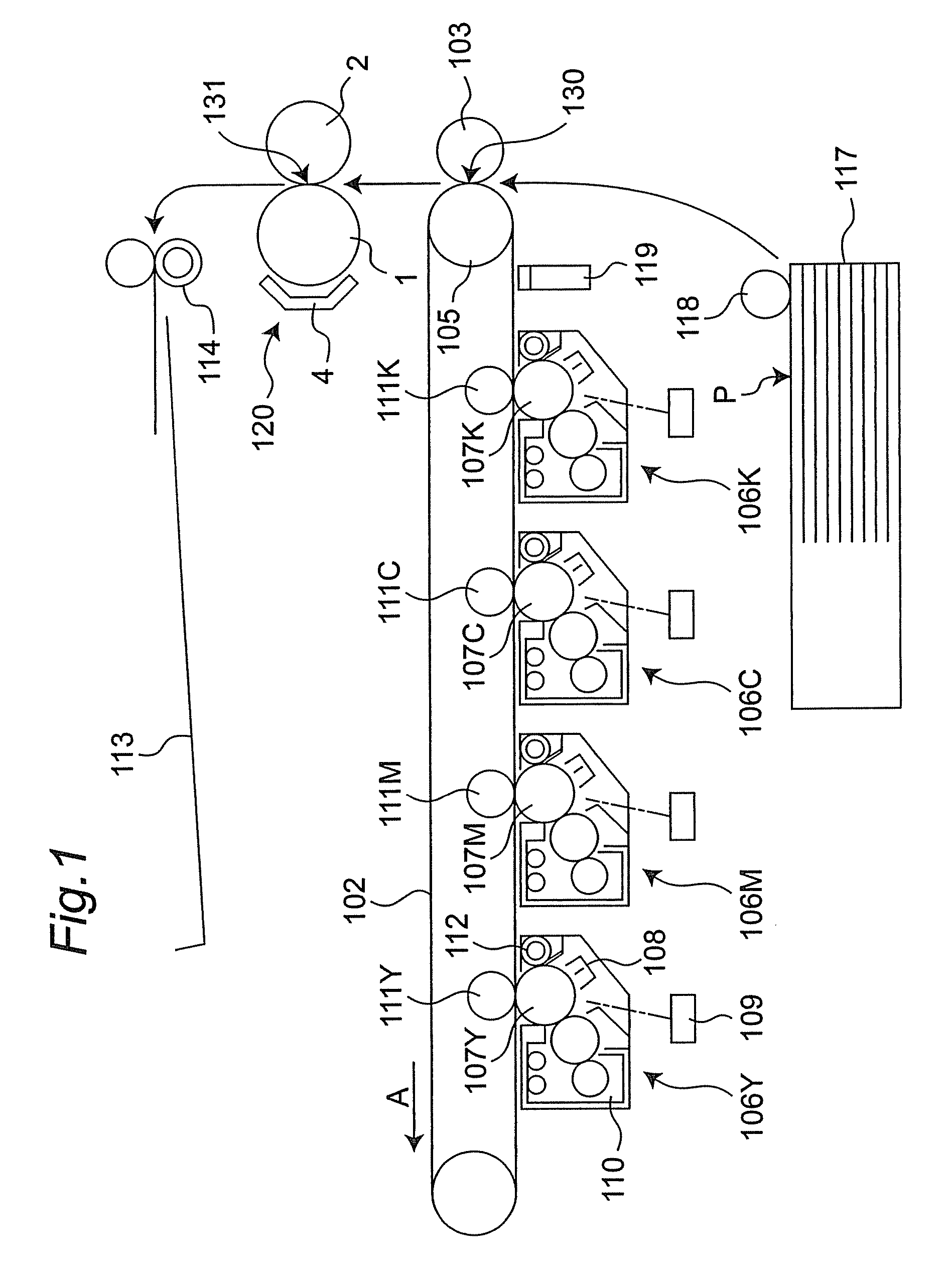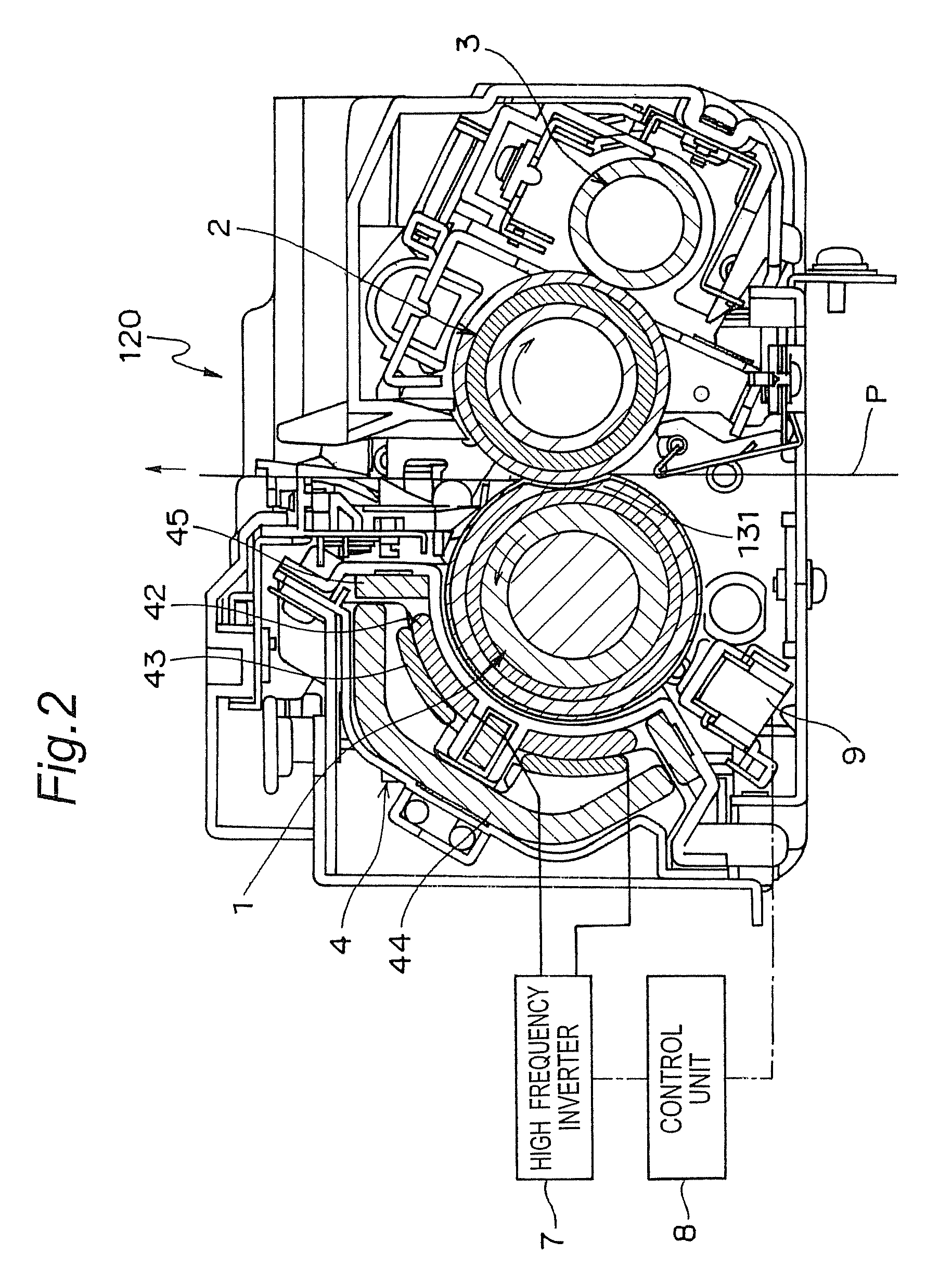Fixing device and image forming apparatus
a technology of fixing device and image forming apparatus, which is applied in the direction of electrographic process apparatus, instruments, optics, etc., can solve the problems of large temperature differences between the pass area and the non-pass area, the difficulty of the pressure roller in transporting heat, and the inability to equalize the temperature of the pressure roller in the axial direction, so as to improve the product quality and the durability of the apparatus
- Summary
- Abstract
- Description
- Claims
- Application Information
AI Technical Summary
Benefits of technology
Problems solved by technology
Method used
Image
Examples
first embodiment
[0027]FIG. 1 shows a simplified structural view of an image forming apparatus of the invention. The image forming apparatus, shown as a color printer, has an intermediate transfer belt 102 as a belt member at a generally center of the inside of the apparatus. Under a lower horizontal portion of the intermediate transfer belt 102, four image forming units 106Y, 106M, 106C, 106K corresponding to yellow (Y), magenta (M), cyan (C) and black (K) colors, respectively, are placed in array along the intermediate transfer belt 102. The image forming units 106Y, 106M, 106C, 106K have photoconductor drums 107Y, 107M, 107C, 107K, respectively.
[0028]A charger 108, a print head unit 109, a developer unit 110, a primary transfer roller 111Y, 111M, 111C, 111K, and a cleaner 112 are placed around each of the photoconductor drums 107Y, 107M, 107C, 107K in this order along the rotational direction of the drums. The primary transfer rollers 111Y, 111M, 111C, 111K confront the photoconductor drums 107Y,...
second embodiment
[0070]FIG. 6 shows a second embodiment of the fixing device of the invention. This second embodiment differs from the first embodiment in terms of the construction of the pressure roller.
[0071]As shown in FIG. 6, a pressure roller 2A, as compared with the pressure roller 2 of FIG. 4, has a high thermal-conduction elastic layer 25 between the metal layer 23 and the mold releasing layer 24. It is noted here that like reference signs denote like component members as in the first embodiment, and so their description is omitted.
[0072]The high thermal-conduction elastic layer 25 is larger in thermal conductivity than the low thermal-conduction elastic layer 22. The high thermal-conduction elastic layer 25 is formed of silicone rubber having a thermal conductivity of 0.5 W / m·° C. The high thermal-conduction elastic layer 25 is 150 to 300 μm thick. The high thermal-conduction elastic layer 25 functions to more equalize the temperature of the pressure roller 2A in its axial direction.
[0073]N...
PUM
 Login to View More
Login to View More Abstract
Description
Claims
Application Information
 Login to View More
Login to View More - R&D
- Intellectual Property
- Life Sciences
- Materials
- Tech Scout
- Unparalleled Data Quality
- Higher Quality Content
- 60% Fewer Hallucinations
Browse by: Latest US Patents, China's latest patents, Technical Efficacy Thesaurus, Application Domain, Technology Topic, Popular Technical Reports.
© 2025 PatSnap. All rights reserved.Legal|Privacy policy|Modern Slavery Act Transparency Statement|Sitemap|About US| Contact US: help@patsnap.com



